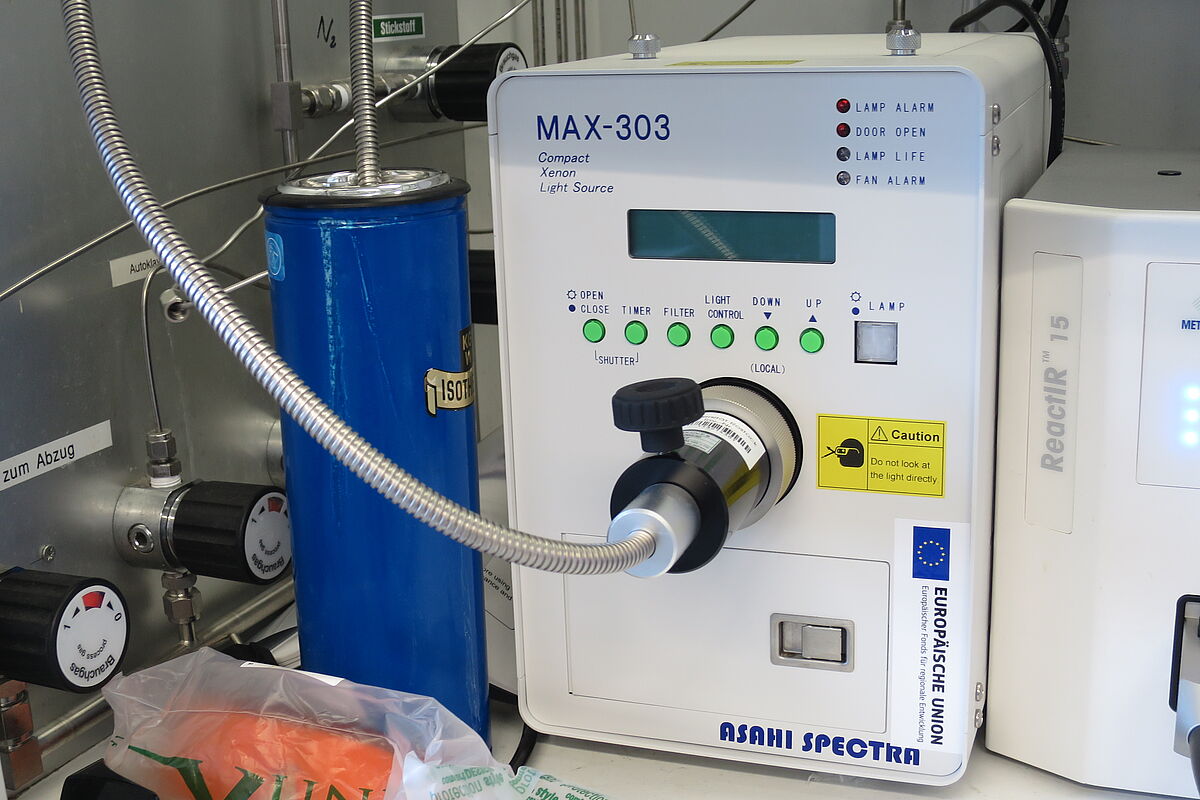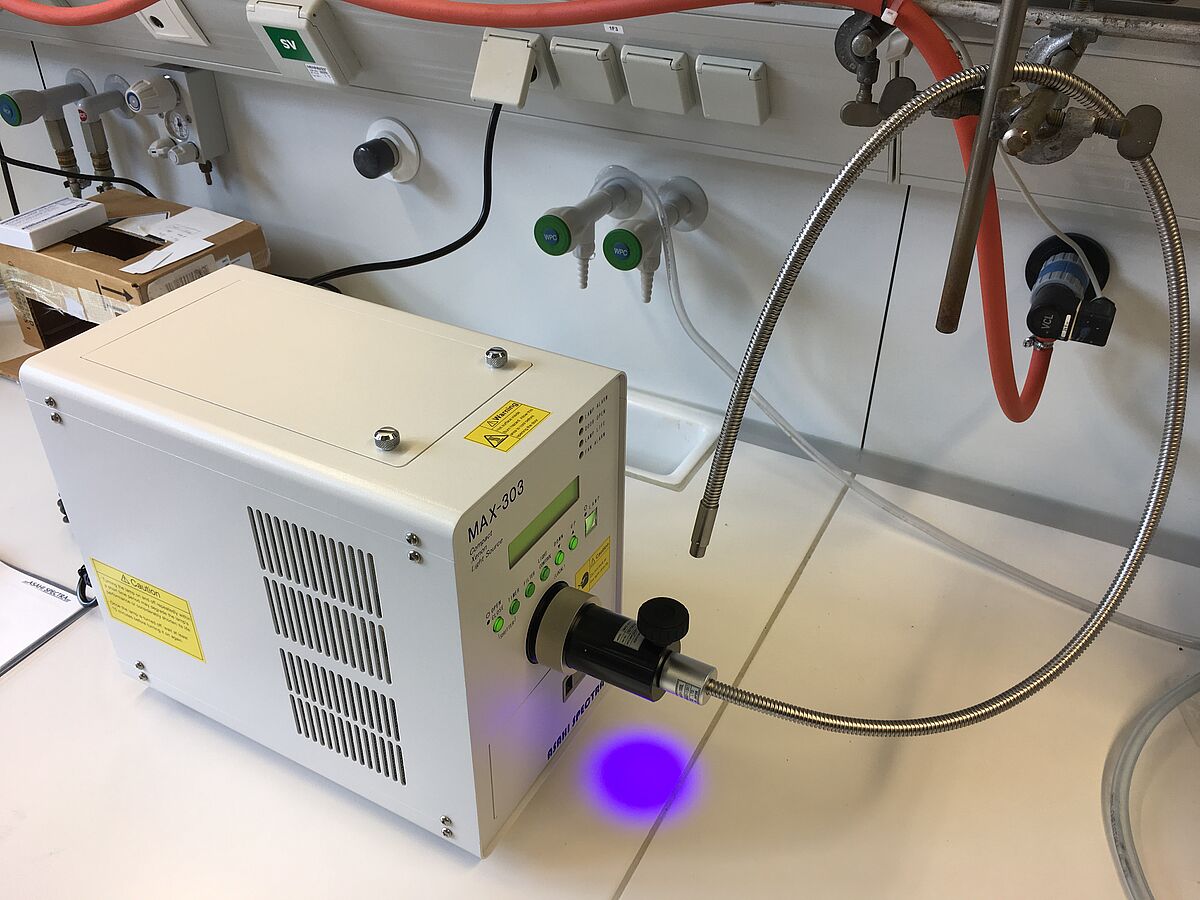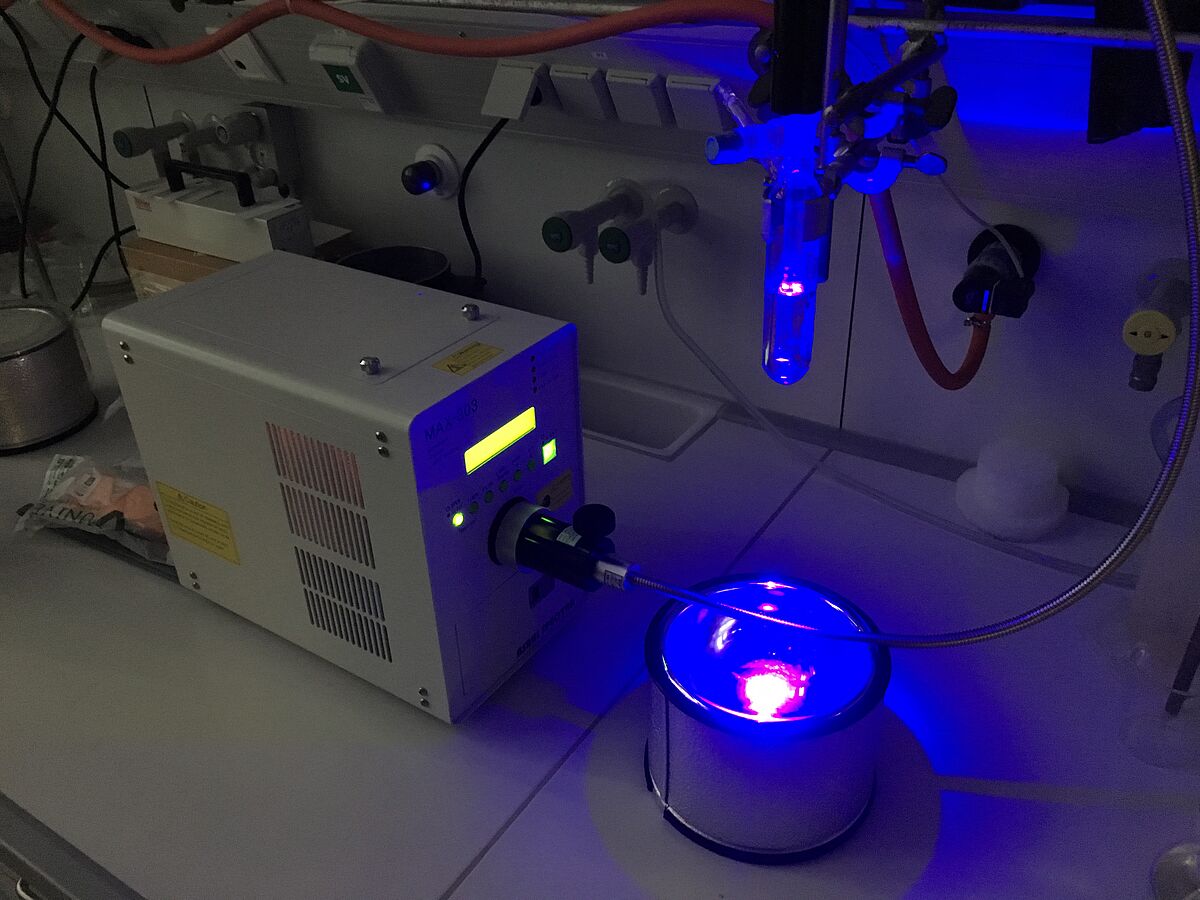Funded by European Regional Development Fund (ERDF)
Thanks to a grant from the state of Mecklenburg-West Pomerania and the European Union and the support of the "European Regional Development Fund" (ERDF), it was possible to acquire in 2017 a High-performance Xenon lamp for photochemical reactions. Photochemistry deals with chemical reactions that can be triggered or accelerated by the effect of light. A requisite for such reactions to take place is that the energy, i.e. the wavelength of the incident light matches with the electron (orbital) energy of the molecular bonds. Possible reactions range from light-induced chain-reactions for the synthesis of polymers, through photocatalyzed organic and bio-organic processes, to artificial photosynthesis for sustainable energy applications. With the help of the high-performance lamp, it is possible to carry out photochemical reactions under complete control. These include the investigation of reaction mechanisms as well as application-oriented preparative photocatalyzed processes. The chosen machine is a Xenon Lamp MAX-303 from Asahi Spectra of 300 W. It is possible to select the desired wavelength from the high-energy UV region to the Visible part of the spectrum. This is achieved with an effective elimination of IR (thermal) radiation, modulated intensity and the possible irradiation in different reactor types thanks to the integrated light guide. The biggest advantage of the MAX-303 compared to other Xenon lamps is the use of mirror modules for the band filtering. The module selects the desired wave-length through its four mirrors and protects the sample against undesired wave-lengths (i.e. in the IR region). Normal band-pass filters have no effect on long-length (IR) radiations and lead sometimes to “burning” of the samples. For that reason, this lamp is ideal for sensitive application in the reals of photochemistry, photocatalysis, artificial photosynthesis, solar simulations, spectroscopy and more. With the acquisition of this powerful Lamp for photochemical reactions in Rostock, it is now possible, together with industrial and social partners, to address certain relevant questions which, in the long run, will strengthen its competitiveness. This spans from synthesis to investigation of aging processes in diverse materials. Also other working groups may use it as a tool for, in cooperation with industrial partners, bringing into the market their technologies, for example in the plant construction using polymeric material.



